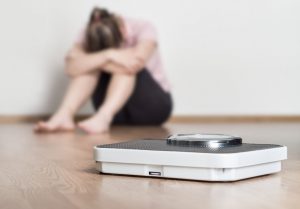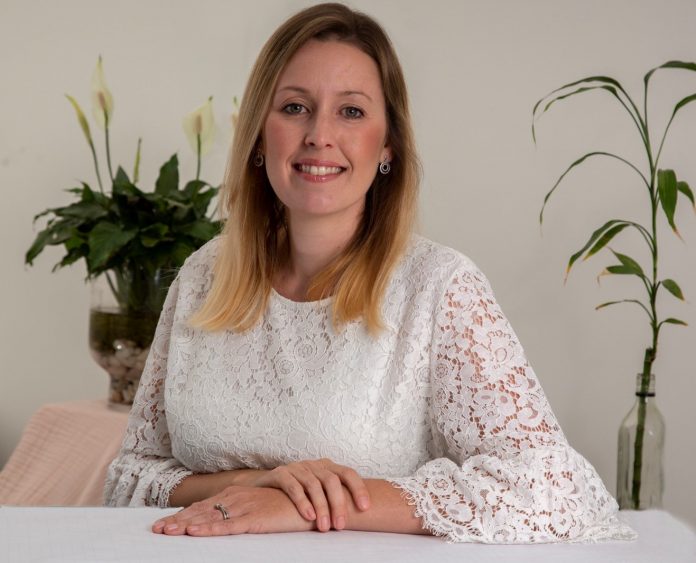An alarming combination of factors could be leading the Sunshine Coast to an undesirable position as the eating disorder capital of Australia.
A growing number of patients as young as nine are being treated at three clinics in the region that have a dedicated special interest in the condition.
At least one of those clinics is treating about 1700 patients a year.
Specialists fear the prevalence in the region could be much higher because many more men, women and children with eating disorders (ED) go undiagnosed.
The Butterfly Foundation is soon to launch Australia’s first residential treatment centre for ED on the Coast.
But the in-community facility will only scratch the surface of the current problem.
The foundation says that, nation-wide, more than a million Australians are living with eating disorders, including bulimia nervosa, anorexia nervosa and binge-eating disorder, but less than a quarter of those receive treatment or support.
Respected Collective Health Co clinical psychologist Natasha Jivan, founder of the Sunshine Coast’s Insight Psychology Clinic, said eating disorders were more prevalent than the public would expect, or what research could detect.
Help keep independent and fair Sunshine Coast news coming by subscribing to our free daily news feed. All it requires is your name and email. See SUBSCRIBE at the top of this article
“The problem is that our diagnostic manual that we use has very specific criteria about an individual’s symptoms in order to be diagnosed with an eating disorder,” Mrs Jivan said.
“So those people who don’t fulfill that criteria are diagnosed with a more vague and non-specific category called OSFED (Other Specified Feeding and Eating Disorder).”
She said her clinic alone was receiving 10 new calls, or referrals, each business day – 50 per week – with practitioners seeing about 1700 clients each year.
The Coast’s preoccupation with shape, weight and size – leading to an obsession with exercise – was one of the factors to blame.

It possibly is also a reason why males now make up 10% of patients who have body image issues.
Performance-driven sport is another contributor, pushing some elite athletes to the brink of unhealthy eating patterns and over-exercise, resulting in ED.
“When you are in a culture that encourages preoccupation with performance, with food intake and with energy output, it’s a dangerous combination for people who are prone to eating disorders,” Mrs Jivan said.
Our “diet culture”, however, was contributing to a far greater problem: disordered eating – a merry-go-round of irregular eating patterns, intermittent fasting, abandonment of certain food groups such as carbohydrates, and concentration on other foods to the detriment of health.
Do you have an opinion to share? Submit a Letter to the Editor with your name and suburb at Sunshine Coast News via: news@sunshinecoastnews.com.au
Mrs Jivan said psychologists thought of ED as a spectrum ranging from patients with full-blown eating disorders at one extreme and disordered eating at the other.
“Disordered eating we consider to be behaviours that encourage (food) restriction, in addition to behaviours that encourage compensation of (food) intake such as exercise and diet pills – all of which is recommended in our society within diet culture,” she said.
“It’s all these extreme diets that are risk factors and there’s also a lot of over-exercising that’s encouraged.”
Mrs Jivan said genetic, personality and temperament (anxious, perfectionistic or self-punitive) predispositions also played their part in creating ED.
“It’s a complex interplay of multiple factors,” she said. “We know that people with a first-degree relative have a 40-60% increased chance of developing an eating disorder.
“If you have a certain type of temperament and personality and you think dieting is the answer, you can easily switch on the cycle of an eating disorder.
“Once individuals with that type of baseline way of being get caught up in diet culture and start restricting their intake or engage in any form of abnormal eating, they are at great risk of an eating disorder and next thing you know they’re stuck in a cycle.

“All the self-loathing comes out, which is what is at the core of an eating disorder – negative self-beliefs.
“Then the eating disorder says, ‘Oh here’s a great idea, why don’t you just change your weight, shape and size and everything will get better’. And they go back on the merry-go-round.
“So, it’s this very nasty cycle you can get into which is also a way of hiding other things that are going on in a person’s life and covering up their suffering. They are often used as a coping strategy.”
Many sufferers kept their ED symptoms hidden from loved ones.
“That’s the nature of the illness,” Mrs Jivan said.
“The illness is a secretive beast. It’s one of the few psychiatric disorders that wants to drive the individual to be unwell.
“It doesn’t want the individual to get well because it says that your shape, weight and size is more important than anything else in the world and anything that gets in the way of that, we’re just going to bulldoze it.”
Mrs Jivan, also a trained nurse, admits she “fell into” the field of eating disorders while being attracted to the mental health field and studying psychology. She cold-called a New Farm clinic 15 years ago and was given a position in its 12-bed ED unit.
After working in the private and public health systems, Mrs Jivan set up her own clinic six years ago (now with nine psychologists, three dietitians and a psychiatrist in-house) and has extensive experience in the field.
She said that on first meeting someone with an ED, “you can feel it in the room”.
“We use a term called externalisation, where we talk about the eating disorder like a separate being,” she said.
“We ask clients to give it a name because of the nature of it.
“The reason we do that is to help families and to help the person be able to separate themselves from the disorder because they can take on the eating disorder’s beliefs and feel like it is them.
“Part of our job is to help them see that they are not an eating disorder.”

The Butterfly Foundation says people with ED have the highest mortality rate of any mental illness in Australia – even higher than the annual national road toll.
“The reason the mortality rate is so high is not just because of the physical complications, it’s because the suicide risk is so high,” Mrs Jivan said.
“It’s because the person themselves, the healthy part of them, is trying to get the hell away from this eating disorder and yet … it’s like the ED is so powerful it won’t let them give up.
“The eating disorder is so strong. And so, when the hopelessness kicks in and when the individual feels as though they can’t overcome the eating disorder because it has taken over their life, then they’re at risk of suicide.”
The Butterfly Foundation chose the Sunshine Coast for an Australia-first trial, that has just been extended, to create a best-practice, evidence-based approach to ED treatment.
In a nutshell, the Sunshine Coast Eating Disorder Access Trial (SCEDAT), which has been accepting referrals since January 2019, is aimed at early intervention and ED diagnosis for people aged 14 years and over, with an emphasis on disordered eating.
Because research shows those in the early stages of developing an ED rarely volunteer information to health professionals on their eating behaviours, making early identification challenging, SCEDAT has been providing information, screening tools and outreach to GPs and other service providers on ways to promote screening practices for high-risk groups.
Ultimately, the trial seeks more Federal Government funding under Medicare for increased numbers of psychology and dietetic sessions for ED patients to see them on the road to recovery.
The 2021 Federal Budget provided $26.9 million for more supports for people with ED, including $13 million to establish a national eating disorder research centre.
The Butterfly Foundation CEO Kevin Barrow said it was encouraging to see that the Government had listened to the voice of lived experience, as well as expert advice to work towards genuinely improving the lives of people living with mental health issues, including ED.
“We have seen a surge in demand to our services from young Australians and their parents over the last 12 months, so it’s heartening to see the Federal Government recognising the seriousness of the problem in this Budget,” he said.
Meanwhile, the foundation recently launched its #ChangeThePicture national campaign targeting body dissatisfaction as one of the leading risks in the development of ED.
As well as changing the mindset on body image, nipping ED in the bud with an early diagnosis appears the only hope of curbing the current alarming upward trend in numbers of sufferers.
Mrs Jivan said her clinic aimed to better educate general practitioners as primary healthcare providers and the first line of defence in detecting ED.
“GPs are becoming increasingly confident (in knowing about eating disorders) but I don’t think they all screen routinely for eating disorders,” she said.
“We (as a clinic) have grown astronomically and we get so many calls every week from people just desperate for help with eating disorders … more than what we can service and we have a wait list to our clinic.”
Eating disorders can average five to nine years but with an early diagnosis, the turnaround to recovery could be as little as a year or two of treatment.
Unlike those with diseases such as alcoholism, ED patients could fully recover. The key was never to restrict food intake or diet, even in stressful times of life.
Mrs Jivan said she felt privileged to see a patient’s journey to recovery, allowing them to lead fulfilled and meaningful lives – often going on to work in the health field as compassionate clinicians.
“I was so drawn to working with this population because these people are beautiful people who are empathetic and sensitive, but this illness comes into their lives and just wants to destroy it,” she said.
If you or a loved one are struggling, call Lifeline on 13 11 14. For help with eating disorders on the Sunshine Coast, visit collectivehc.com.au, www.ended.org.au, anxietyhouse.com.au and butterfly.org.au.
EATING DISORDERS: THE RED FLAGS
Anxiety House Sunshine Coast – a private psychology practice based in Parrearra – lists these red flags on its website that may indicate an eating disorder is present:
• Limiting portion sizes and dieting
• Cutting out major food groups, such as carbohydrates
• Avoiding social activities that involve food
• Going to the bathroom during or immediately after meals
• Exercising excessively, especially when alone
• Using laxatives or spending long periods of time in the bathroom
• In females: irregular periods or periods stopping
• Feeling tired and lacking energy more often than not
• Soft downy hair growing on arms, face, or torso
• Hair loss from head
• Swollen puffy cheeks
• Damaged teeth and/or gums
• Sores on hands and/or knuckles
• Mood swings
• Sensitivity to references about weight or appearance
• Fluctuations in weight
• Deceptive behaviour around food (e.g., throwing lunches away)
• Eating in secret.





